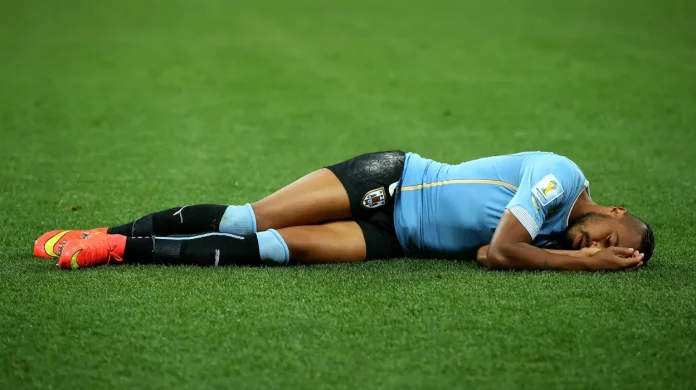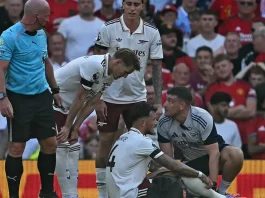An age-specific data highlighted that the highest risk group consisted of 11 and 12-year-old players as they experience injury rates that are nearly twice as many as in older teens. Injury rates in girls were also found to be a bit higher than those of boys-16.7 and 14.7 per 1,000 player hours respectively, but not statistically significant. Injuries to lower extremities were most common; they affected the knee, ankle, and foot mostly, but the fact that the head was injured in almost 7% of the cases was raising serious questions related to the safety of the brain in young athletes.
The silent threat of head injuries and neurological risk
Although less common, head injuries hold a niche due to their possible long-term effect. Single concussions among the youth players can result in long-term symptoms and accumulation of cognitive problems. Increasingly the subject of scrutiny in sports science, sub-concussive blows are commonly ignored or misdiagnosed, particularly in fast tournament environments where medical care is necessarily concentrated on acute and overt trauma.
The results of their experience during the Gothia Cup are indicative of a bigger picture at the global level: a large number of matches within a short time frame without sufficient rest or medical examination. Although the understanding of chronic traumatic encephalopathy (CTE) and its associations with contact sports have improved, protocols in youth levels are vaguely implemented. The existing FIFA advice on head injuries is designed based on the standards used in elite professional sport, and little of it is translated into local application, in particular in those countries whose federations are under-resourced.
Structural weaknesses in FIFA’s medical governance
FIFA flag injury prevention program- FIFA 11+ has proven effectiveness in lower limb injuries in cases where it is applied regularly. Clinical research has demonstrated a maximum of 46 percent drop in avoidable injury in youth athletes when neuromuscular control and warm-up programs are properly implemented. FIFA has however not been supportive in ensuring the implementation is standardized amongst the member associations. It is not taken up in 2025 and the disparity across regions and income levels is wide.
Lack of trained personnel, a lack of funds and access to materials are often used by grassroots clubs as barriers to adoption. Fidelity to the program structure is frequently undermined in the locality of program implementation either by time constraints, or absence of surveillance. Such failures are also exacerbated by the reality that, in many tournament settings, there are no coordinated recovery systems in place, and the result is a disconnect between the occurrence of injury and its eventual rehabilitation or clearance.
Scheduling overload and workload mismanagement
The growth of young-athlete contests, along with the imitation of professional training, experienced in the elite sports, has put young organisms under physical burdens that they could not endure. Since FIFA is steadily adding to the international calendar with youth-level competitions, regional and exhibition cup competitions, the number of young athletes who have to train and play on tight timetables with little to no rest is growing.
The recent move by FIFA to enlarge the format of Club World Cup and to include youth development showcases has further blurred the line between high-level management of athletes and grassroots protection. There are current models of tournament conditions that youth players are exposed to, which are based on adult competition structures, though they are more susceptible to fatigue, overuse injuries, and developmental stress fractures.
Accountability, data transparency, and governance inertia
The model of medical governance in FIFA has resulted in many guidance publications and injury protocols, however implementation and adherence is inconsistent. The critics mention that there are no real enforcement mechanisms. The associations of members which do not have injury surveillance systems or do not have in place qualified medical personnel at authorized tournaments are not subjected to any formal penalty, thereby creating an environment in which safety measures are not compulsory.
One of the greatest impediments to development is data fragmentation. Data on youth football injuries across the world are not always gathered and stored, thereby restricting the ability to monitor risks in real-time and implement region-specific measures. Health experts and advocacy groups have suggested to FIFA that it should create a single injury reporting system, which clubs and federations can access, although it has made little progress.
FIFA has also been challenged in terms of its public health position because of commercial forces. The organization of the large-scale youth tournaments and brand alliances often has no correspondence to the new safety systems. The hypocrisy of promoting growth and involvement and neglecting to protect the fundamental health standards by encouraging such activities has hurt the credibility of medical professionals and youth sport advocates.
Overlooked psychological and emotional dimensions
In addition to physical trauma, young football players are experiencing mental health issues more and more, being enhanced by competition, the pressure on performance, and the lack of support systems. Psychological stress, sport-related anxiety, and burnout are stated as an increasingly emerging issue especially amongst teenagers otherwise in their elite careers with few coping mechanisms.
It is not however a requirement of the FIFA medical structure that mental health care should be integrated into the youth tournament structures. In case of psychological support, it is usually provided at the national or club level, only to strengthen the differences between well-financed and poorly funded football ecosystems. The current policy lacks a holistic approach, such as the inclusion of mental wellness, rest, nutrition and development of emotions.
The call for reform and renewed priorities
The problem of youth injuries reveals a very serious loophole in the responsibilities that FIFA has as its foundation. Its mandate should focus on protecting young athletes but the commercial-governing-welfare disproportion raises the question of a lack of integrity between the stated values and the operational realities. Structural investments in education, certification of the world coaches in the field of injury prevention, imposition of medical staffing ratios at authorized events should be taken as the first steps in the direction of remedial actions.
A unified injury tracking system must be prioritized, alongside the creation of a medical audit mechanism that ensures member associations comply with minimum safety standards. These measures must also be supported by resource-sharing schemes, enabling developing nations to provide equivalent levels of protection.
The youth injury epidemic FIFA medical oversight 2025 has laid bare a defining challenge for the future of the sport. Whether FIFA rises to meet it through systemic reform or continues prioritizing global expansion without meaningful protections will reveal much about the organization’s evolving identity. The stakes involve not only the physical well-being of young players but the credibility of football’s claim to be a sport that nurtures, rather than exploits, its most impressionable participants.




